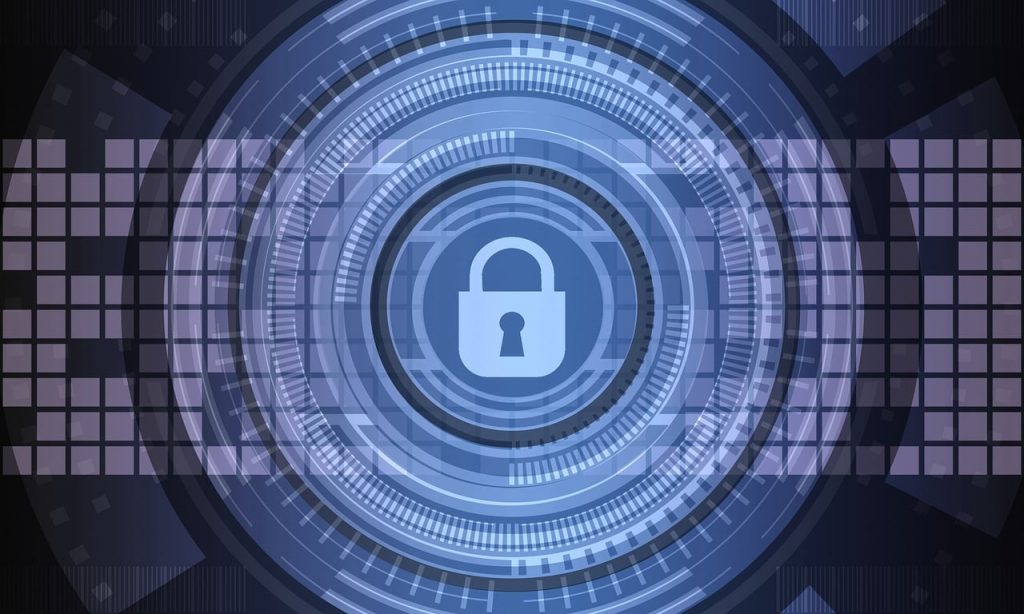Published On: 5th September, 2024
Authored By: Mrigank Singh
Symbiosis law school
Abstract:
This is very evident how Public Interest Litigation (PIL) has today become the most potent weapon in the hands of the victims of social injustice and the have-nots, thus providing them access to the courts for advocating the interest of the public, though their personal interest might not be at stake. The seeds of the concept were however sown in the United States but this concept is now received with open arms in many jurisdictions across the globe, mainly in India, where it has ironically become the centrepiece of judicial activism. One expansion in the realms of judicial review has taken place through the evolution of the concept of PIL, enabling courts to entertain cases regarding wide-ranging issues encompassing environmental protection, human rights, consumer rights, and good governance. PIL often follows a relaxed procedural framework, unlike traditional litigation, and is, therefore, more accessible to the common citizen, besides civil society organizations. In fact, the very accessibility underlines the democratic ethos of PIL—thus empowering the people to seek redress from injustices and maladministration. The proactive role of the court in resolving issues of public concern would be a significant characteristic of PIL. On the ground of PIL, courts have held so many landmark judgments that resulted in a change in policy and reform. It has proliferated so widely that it has also come under criticism for judicial overreach and misuse by vested interest people. In other words, a balance between the concept of judicial activism and the concept of judicial restraint continues to remain a controversial debate in legal fraternity. The present article, therefore, focuses on the significance of PIL as a potent instrument for ensuring social justice. It points to the need for a balanced approach, whereby genuine concerns should be addressed while protection has to be taken against frivolous litigation. The present analysis is aimed at contributing to a better appreciation of the role of PILs in furthering the rule of law and securing a more just society.
Introduction:
PIL has indeed emerged as a revolutionary doctrine in the realm of legal jurisprudence, transforming traditional notions of locus standi and extending the horizons of judicial activism. It empowers a person or entity to approach courts on behalf of public interest and hence has emerged as a very powerful tool of social change and protection of fundamental rights to the downtrodden and underrepresented in the society. The concept of PIL was thus born and has its origins in the United States during the 1960s, specifically for advocacy pertaining to racial equality and civil liberties on the part of underprivileged and deprived people. However, the most detailed and extensive use of the idea of PIL was at the hand and crusading zeal of the Indian Supreme Court late in the ’70s and early ’80s. The creativity of the Supreme Court in interpreting the provisions of Article 32 of the Indian Constitution to ensure a right to constitutional remedies made the judicial system much more approachable and active. Normally, the legal system had also restricted itself to the boundaries that only the parties who were entitled to be affected as a wronged party had the right to access courts. Primarily, it is this principle—locus standi—that has denied most marginalized and those who could not afford a lawyer a place in cases of injustice. However, the invention of PIL ensured a sea-change in this regard and gave common people the leeway to make a difference in the cause of the disadvantaged along with taking the authorities to task. This chapter is, however, just an introduction, which launches deep into the soul of PIL, its historic evolution, and its ever-existing potentiality for the observance of social justice. The process of development of PIL is not devoid of controversies, though. It is one in which critics explore or have been exploring the charges of judicial overreach leading to a blurring of the distinction between judiciary and the executive. There are also concerns at the potential for abuse of the PIL mechanism, with every now and then some frivolous or publicity-seeking petition finding its way to the courts. Further, there remain questions on the capacity of the judiciary to deal with complex policy questions that traditionally fall within the purview of the legislature and executive. But, be that as it may, the impact of PIL on the legal orders of the world cannot be overemphasized. It has, in many courts across the universe, provided decisions regarding, among many, the protection of the environment and human rights, governmental transparency, and corporate responsibility. In India, for example, PIL has led the way to remarkable development—path-breaking judicial decisions on the right to education, clean air, and privacy. The concept of PIL, not defined in any codified law, has rather blossomed out through judicial pronouncements. In essence, it gives the power to any public-spirited citizen or association to bring a petition before the Supreme Court or High Courts for the enforcement of public interest. This category of public interest can range from environmental degradation, violation of fundamental rights, poor social welfare programs, and deficiencies in governance. PIL acts as a bridge, giving voice to those who are either denyingly resourceless or even too intimidated to directly approach the courts on their own behalf. It empowers the marginalized communities, environmental activists, and social welfare organizations to become change agents through redress with the help of the power of the judiciary in systemic issues and binding authorities to duly discharge their legal obligations. It has its roots in the phenomenon of path-breaking judgments delivered by the Indian judiciary. Landmark cases like Hussainara Khatoon v. State of Bihar [AIR 1979 SC 1360] and M.C. Mehta v. Union of India (Air 1988 SC 1115) underscore the deplorable conditions prevailing in the prisons and, in this particular case, environmental pollution; they bear testimony to the potential of PIL to bring about change. These judgments never stopped at mere remedial but rolled with an activist spirit, urging the judiciary to play an active role in serving public interest. PIL has caused a permanent imprint on the legal firmament as an act that converted ordinary citizens into change agents. It proved to be an effective instrument for the enforcement of fundamental rights, social change, and justice. There are admittedly many hurdles present, especially with the curbing of frivolous litigation, which will secure PIL’s potential benefits. Going ahead, it is important to strike a balance between the encouragement of genuine public interest litigations and safeguarding the court system from frivolous petitions. By so doing, PIL can continue to play a pivotal role in the making of a more just and equitable society.
Legal framework and principles:
The PIL movement is based on the basic premise that it is a component of the judicial function to enforce the rule of law and protect the rights of the public. The main basic principles on which this PIL works are:
Locus Standi: Traditionally, only the persons who could prove to be directly affected by the legal issue were allowed to move the court. PIL relaxes this condition, and any citizen or group of people acting on behalf of others can file a petition. The principle is important in addressing the grievances of disadvantaged groups who may not have the resources or know-how to take recourse.
Judicial Activism: PIL in India has quite often been a part of judicial activism, where the courts have taken a proactive stand in the interpretation of laws and the constitution to address issues of society. This approach has been instrumental in furthering human rights and environmental protection and many other causes.
Public Duty: PIL serves as a tool for the enforcement of public duties and realization of governmental accountability. It attends to the acts of omission on the part of trustees of public authorities toward discharging their duties and ensures that the State adheres to its constitutional and statutory responsibilities.
Advantages of PIL:
PIL has a number of advantages, hence making it a vital factor in the assurance of social justice and keeping the governments on their toes. Some of the major advantages associated with PIL are as follows:
1. Access to Justice for the Marginalized Groups:
PIL helps ‘make accessible to the courts groups and individuals who have no means or who lack the knowledge and expertise to effectively approach the courts’. This though goes without saying, it is especially an important aspect for poor, minorities, and other disadvantaged groups to ensure that their rights and grievances are addressed.
2.Promotion of Human Rights and Social Justice:
PIL has served as a very useful tool in the areas of human rights and social justice. Courts, on the basis of PIL, have become protectors of the rights of such weaker and downtrodden sections of society such as prisoners, bonded laborers, and women, getting very valuable legal and social reforms.
3.Judicial Review of Executive and Legislative Actions:
PIL empowers the judiciary to question the executive and the legislature for their actions taken in violation of laws or the constitution. This system helps ensure checks and balances to make sure no organ reciprocates nuisance or arbitrary decisions.
4. Environmental Protection:
PIL has played a significant role in the conservation and protection of the environment. Courts through PIL take up matters relating to pollution, deforestation, and protection of wildlife, the majority of which culminate in landmark judgments enforcing stricter environmental regulations and policies.
5.Government Accountability and Transparency:
To fathom the public administration needs to incorporate policies and principles of transparency and accountability. This is possible through PIL, which can be filed by a common public and allows challenging corruption, power abuse, and administrative failures through more transparent and accountable public administration.
6. Policy Reforms:
PIL can also result in significant policy changes and reforms. Judicial interventions in the form of PIL can result in the formulation and implementation of new policies and laws, more in the nature of catering to public interest and general welfare and less to solving systemic issues.
Disadvantages of PIL:
While Public Interest Litigation (PIL) has many advantages, it also faces several criticisms and challenges that can undermine its effectiveness. Here are some key disadvantages of PIL:
- Judicial Overreach:
One of the primary criticisms of PIL is judicial overreach. Courts may sometimes overstep their constitutional boundaries, encroaching upon the functions of the executive and legislative branches. This can disrupt the balance of power and lead to conflicts between different branches of government.
- Delayed Justice:
The backlog of PIL cases can lead to significant delays in the judicial process. The sheer volume of PIL petitions can overwhelm courts, resulting in prolonged litigation and delayed justice for both PIL cases and other litigations.
- Implementation Challenges:
Even when courts issue favourable judgments in PIL cases, the implementation of these orders can be inconsistent. Bureaucratic inertia, lack of political will, and administrative inefficiencies can hinder the effective execution of court directives, limiting the real-world impact of PIL.
- Limited Scope of Judicial Intervention:
Courts may be limited in their ability to enforce broad social and economic changes through PIL. While judicial interventions can address specific issues, they may not be equipped to tackle the underlying structural problems that require comprehensive policy solutions.
- Overburdened Judiciary:
The increase in PIL cases adds to the workload of an already overburdened judiciary. This can lead to delays in other cases and strain judicial resources, affecting the overall efficiency of the judicial system.
Cases related to PIL:
Hussainara Khatoon v. State of Bihar (1979): Popularly known as the mother of all the PILs in India, this was concerned with the pathetic state of the Bihar prisons. The litigation was due to the petition— public interest litigation—of a very public-spirited lawyer and pioneer in this area of law in the country, Kapila Hingorani, because of which nearly 40,000 undertrials languishing in various jails of Bihar were released. It then went to suggest that corollaries even established the power of the locus standi of the court to take suo motu action against the violation of fundamental rights.
M.C. Mehta v. Union of India (1988): This public interest case was filed by an environmental lawyer, M.C. Mehta, dealing with scary industrial pollution that tanneries in Kanpur were posing. The industries had to adopt cleaner industrial practices. This is the case where public interest litigation was proved in the area of saving the environment and ensuring good development.
Olga Tellis vs Bombay Municipal Corporation 1985: Hearing the challenge of many slum dwellers’ forced eviction, the court ordered no order for eviction and directed for improvement regarding living conditions because of people’s right to shelter. This case establishes how PIL will protect the rights of marginalized community members and see that they are not being treated unequally.
Vishaka v. State of Rajasthan, 1997: This has been the leading case in which the Supreme Court laid down some guidelines that would guide both in preventing and redressing sexual harassment at every place of work, or rather workplace, across the country. It was in the aftermath of the gang rape of a social worker, female-Bhanwari Devi, that the Supreme Court framed landmark guidelines on the protection of women from sexual harassments at a workplace through public interest litigation, known as the Vishaka Guidelines.
Right to Food Campaign v. Union of India: This was a PIL for the cause of millions sleeping hungry in this country by pitching the right to food under Art. 21 of the Constitution of India as a fundamental right. This mandated the National Food Security Act, 2013, with a guarantee and subsidy for food grains to millions below the poverty line. That this will affect the abilities of PIL in social welfare-related policy.
CONCLUSION:
Public interest litigation is a mechanism that has turned around the judicial system, in which judges have become activists by taking up issues of the broad masses and espousing the cause of the oppressed and marginal sections. In this sense, it democratises access to justice by relaxing the traditional rules relating to locus standi and permits public-spirited individuals or bodies to move forward seeking redress of collective concerns. This has not only led to a massive range of legal and social reforms, but has also resulted in increased accountability from both, the executive and the legislative segments. PIL can readily boast of a number of successes. It has led to important changes in respect to environmental regulations, human rights, and democratic transparency. Through important landmark court cases, such as Vishaka v. State of Rajasthan and M.C. Mehta v. Union of India, it has set an important precedent regarding environmental protection and public interest, conducting to formulation of social policies concerning workplace safety and environmental conservation. The effectiveness of PIL, however, is not untrammelled by dissensions. Concerns over judicial overreach and encouragement of frivolous litigation, besides problems of implementation, are major threats to its integral and effective capacity. Making sure PIL remains a tool for public interest taken up genuinely and not opportunistically needs constant vigil and its judicious use. PIL also plays a very vital role and can run only where there is a balance between activism of judiciary and restraint. Courts have to tread between intervention and overreach in such a fashion that the actions of the courts remain supportive of, rather than destructive of, the legislative and executive functions.
In conclusion, PIL is a powerful instrument for ensuring justice and social change, serving as a reflection of judicial adherence to constitutional values and human rights. The inherent challenges need to be addressed, and a collaborative approach of all stakeholders—judiciary, government, and civil society—so that this instrument of social change remains relevant and effective. With careful stewardship, PIL can go on illuminating hope in the voiceless and be an agent of positive societal transformation.
References:
- Mayashree Acharya, What is Public Interest Litigation (PIL) and What is Its Importance?, (Aug. 28, 2023), https://cleartax.in/s/public-interest-litigation.
- Public Interest Litigation (PIL) in India, (Aug. 13, 2017), https://byjus.com/free-ias-prep/public-interest-litigation-pil/.
- Rachit Garg, All you need to know about Public Interest Litigation (PIL) – iPleaders, IPleaders (Feb. 23, 2021), https://blog.ipleaders.in/need-know-public-interest-litigation-pil/.
- PIL in India, Exploring Famous Cases (Nov. 18, 2022), https://vakilsearch.com/blog/examples-pil-india/.




